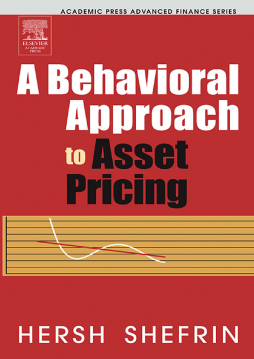
Additional Information
Book Details
Abstract
A Behavioral Approach to Asset Pricing Theory examines the reigning assumptions of asset pricing theory and reconstructs them to incorporate findings from behavioral finance. It constructs a solid, intact structure that challenges classic assumptions and at the same time provides a strong theory and efficient empirical tools.
Building on the models developed by both traditional asset pricing theorists and behavioral asset pricing theorists, this book takes the discussion to the next step. The author provides a general behaviorally based intertemporal treatment of asset pricing theory that extends to the discussion of derivatives, fixed income securities, mean-variance efficient portfolios, and the market portfolio.
The book develops a series of examples to illustrate the theoretical results. The CD-ROM contains most of the examples, worked out as Excel spreadsheets, so that a diligent reader can follow them through.
Instructors might also want to use the examples to assign class exercises, asking students to modify the numbers and see what happens.
* The first book to focus completely on how behavioral finance principles affect asset pricing
* Hersh Shefrin is a recognized expert in behavioral finance
* Behavioral finance is a growth area in finance scholarship and moving more and more into practice
"Students and researchers interested in this important and burgeoning field of finance should read [this book]."
- Financial Analysts Journal
"I highly recommend Shefrin's book to anyone who wants to probe into the implications of behavioral finance for asset pricing. Shefrin builds rigorous theoretical models that integrate investor heterogeneity and psychological biases into the traditional stochastic discount factor framework. The text contains a wealth of original ideas, and provides new modeling tools. The results are convincing and thought provoking. I believe Shefrin's book will help revolutionize our thinking about asset pricing and stimulate more work along its line."
-Bing Han, Assistant Professor of Finance, the Ohio State University
